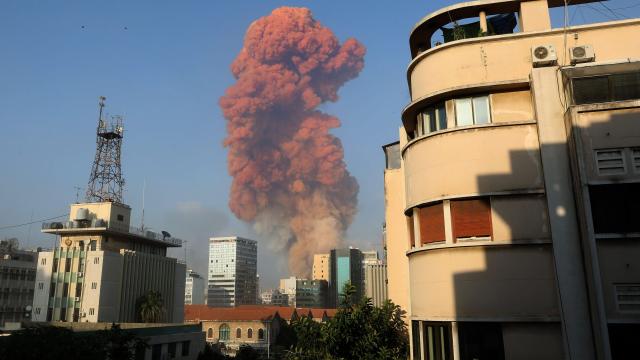New research looks at one of the health impacts from the Port of Beirut explosion of August 2020 — one of the most powerful blasts of its kind in recorded history. The study found that survivors who endured eye injuries were most often harmed by the shrapnel and debris that came from broken glass caused by the explosion. A majority of these injuries required surgical treatment, though most people recovered without becoming permanently blind.
The Port of Beirut blast occurred on August 4, 2020, when hundreds of tons of ammonium nitrate stored in a warehouse suddenly exploded, causing widespread destruction and damage in the city. Though a fire instigated the explosion, it’s not known what caused the fire and whether it was intentional or accidental. What is known is that the blast generated an incredible amount of force, ranging from the equivalent of 500 to over 1,000 tons of TNT being set off, making it one of the biggest non-nuclear and non-natural explosions ever documented. The explosion could be heard over 241 km away, while residents in the nearby countries of Turkey, Syria, and Israel reportedly felt the impact as well.
Estimates vary, but around 200 people are thought to have been killed by the explosion directly, while around 6,000 were injured in some way. This new study, published Thursday in JAMA Ophthalmology, examined what happened to survivors whose eyes were damaged as a result of the blast.
Thirty-nine survivors were included in this research, including two children, who were sent to the the American University of Beirut Medical Centre in Lebanon. Of these, 22 received medical help the day of the blast from eye doctors, while 17 presented symptoms in the following three months. Most people’s eyes were injured by glass shrapnel and debris, which led to eyelid or eyebrow lacerations, injuries to the surface of the eye, blood pooling up in the eye, and orbital fractures, among other injuries.
Twenty-one patients ultimately needed surgical intervention, with most needing it on the same day. Out of the 48 injured eyes in total, seven endured injury severe enough to cause legal blindness (vision at 20/200 or below) in that eye. This included four eyes so damaged that doctors had to remove part or all of them. The pattern of injuries is similar to what has been seen after other major explosions in urban areas, including the Oklahoma City terrorist bombing in 1995, particularly in causing shrapnel-related injuries secondary to the explosion.
“The resulting storm of debris and shrapnel from shattered glass windows and building facades was the main source of injury to most patients,” the study authors wrote. “These secondary blast injuries are the most common form of ocular injuries associated with high explosives and the most severe threat to eyes, accounting for around 80% of ocular injuries seen in military warfare.”
Because the findings are based on a single hospital’s records, they shouldn’t be seen as a full accounting of the eye injuries caused by the explosion. But the centre did receive more patients than usual, due to the explosion damaging other hospitals and wrecking havoc on first aid services, the doctors noted.
By detailing these injuries, the doctors hope their work can inform future efforts by health care staff to respond to these emergencies, especially in times of limited resources. During the crisis, they noted, power outrages and spotty internet service required the hospital to switch back to a fully paper system.
“In our opinion, this disaster showed how physicians can be resilient and have strong intuitions to manage tragic situations sometimes by resorting to basic approaches,” they wrote. “The Port of Beirut explosion overwhelmed all hospital systems despite all existing disaster response strategies and an advanced electronic health care system, with an almost complete breakdown of the latter. The authors believe that such scenarios should be included in disaster emergency preparation plans despite the low rate of such severe and unfortunate events.”
